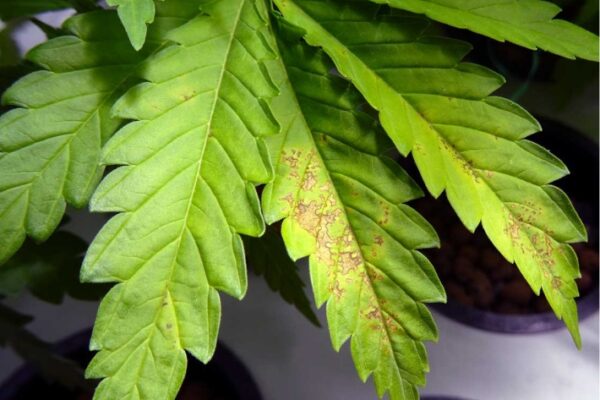Cannabis is a plant that has been used for various purposes throughout human history, from fiber and food to medicine and recreation. But did you know that cannabis also produces a rich diversity of terpenes, the aromatic compounds that give plants their distinctive smells and flavors that we all know and love?
Terpenes are not only responsible for the sensory appeal of cannabis, but also for its synergistic and entourage effects with cannabinoids, the main bioactive ingredients of the plant. Terpenes can modulate the actions of cannabinoids and enhance their therapeutic benefits, such as pain relief, anti-inflammation, anti-depression, anti-anxiety, and more.
In this blog post, we will explore the fascinating world of cannabis terpenes, from their sources and biosynthesis to their chemistry and diversity.
Sources and Biosynthesis of Cannabis Terpenes
Cannabis belongs to the Cannabaceae family, which includes hop and Celtis berry. It is a dioecious plant, meaning it produces male and female flowers separately. The female flowers are the ones that contain the highest concentrations of cannabinoids and terpenes, which are produced in specialized structures called trichomes.
Trichomes are tiny, hair-like outgrowths that cover the surface of the cannabis flowers and leaves. They serve as the plant’s defense mechanism against herbivores, pests, and environmental stress. They also attract pollinators and disperse seeds.
There are three types of glandular trichomes in cannabis: bulbous, sessile, and stalked. Bulbous trichomes are the smallest and least abundant, while sessile and stalked trichomes are larger and more numerous. Sessile and stalked trichomes differ in their morphology, fluorescence, cell number, and terpene profile. Stalked trichomes have a globular head with more than eight secretory cells that produce mostly cannabinoids and monoterpenes, while sessile trichomes have eight secretory cells that produce less cannabinoids and more sesquiterpenes. Little science for ya!
Little more science for ya!
Terpenes are biosynthesized from isoprenoid precursors that are derived from two metabolic pathways: the plastidial methylerythritol phosphate (MEP) pathway and the cytosolic mevalonate (MEV) pathway. These pathways produce the basic building blocks of terpenes: isopentenyl diphosphate (IPP) and dimethylallyl diphosphate (DMAPP). These molecules are then condensed into longer-chain isoprenoid diphosphates, such as geranyl diphosphate (GPP) and farnesyl diphosphate (FPP), which are the substrates for monoterpene synthases (mono-TPS) and sesquiterpene synthases (sesqui-TPS), respectively. These enzymes catalyze the formation of various mono- and sesquiterpenes by rearranging, cyclizing, and modifying the carbon skeleton of the precursors. GPP is also a precursor for cannabinoid biosynthesis, which involves the condensation of GPP with a phenolic compound called olivetolic acid.
Chemistry and Diversity of Cannabis Terpenes
Terpenes are classified according to the number of isoprene units they contain. Monoterpenes have two isoprene units (10 carbons), sesquiterpenes have three isoprene units (15 carbons), diterpenes have four isoprene units (20 carbons), and triterpenes have six isoprene units (30 carbons). Cannabis mainly produces mono- and sesquiterpenes, with traces of di- and triterpenes.
To date, more than 200 volatile compounds have been identified in cannabis, of which 58 are monoterpenes and 38 are sesquiterpenes. The most common monoterpenes in cannabis are limonene, β-myrcene, α-pinene, and linalool, while the most common sesquiterpenes are β-caryophyllene, caryophyllene oxide, E-β-farnesene, and humulene. These terpenes have different chemical structures, physical properties, and biological activities.
Limonene, for example, has a citrus-like aroma and is known to have anti-inflammatory, anti-fungal, anti-bacterial, and anti-depressant effects. It also enhances the absorption of other terpenes and cannabinoids through the skin and mucous membranes. β-Myrcene has a musky, earthy aroma and is known to have analgesic, anti-inflammatory, and sedative effects. It also increases the permeability of the blood-brain barrier, allowing more cannabinoids and terpenes to enter the brain. α-Pinene has a pine-like aroma and is known to have anti-inflammatory, bronchodilator, and memory-enhancing effects. It also inhibits the enzyme that breaks down THC, prolonging its psychoactive effects. Linalool has a floral, lavender-like aroma and is known to have anti-inflammatory, anti-anxiety, and anti-convulsant effects. It also modulates the activity of serotonin and dopamine, two neurotransmitters involved in mood regulation.
β-Caryophyllene has a spicy, peppery aroma and is the most abundant sesquiterpene in cannabis. It is also the only terpene that can directly bind to the cannabinoid receptor CB2, which is involved in immune system regulation and inflammation. It has anti-inflammatory, analgesic, anti-cancer, and anti-depressant effects. Caryophyllene oxide has a lemon balm-like aroma and is the oxidation product of β-caryophyllene. It has anti-fungal, anti-bacterial, and insecticidal effects. It is also the compound that is detected by drug-sniffing dogs. E-β-Farnesene has a floral, green apple-like aroma and is known to have anti-inflammatory, anti-ulcer, and anti-malarial effects. It also acts as an alarm pheromone for aphids, attracting their predators. Humulene has a hop-like aroma and is known to have anti-inflammatory, anti-bacterial, and anti-cancer effects. It also suppresses appetite and reduces weight gain.
The terpene profile of cannabis is influenced by many factors, such as genetics, environmental conditions, growth stage, harvesting time, and extraction method. Different cannabis strains have different terpene profiles, which give them their unique aromas and effects.
Strain Dominant Terpenes Aroma Effects Terpene profile of some popular cannabis strains.
Blue Dream
Myrcene, Pinene, Caryophyllene Berry, Pine, Herbal Relaxing, Euphoric, Creative
Sour Diesel Caryophyllene, Limonene, Myrcene Diesel, Citrus, Skunk Energizing, Uplifting, Happy
OG Kush Myrcene, Limonene, Caryophyllene Earthy, Pine, Citrus Relaxing, Sedating, Hungry
Girl Scout Cookies Caryophyllene, Limonene, Humulene Sweet, Minty, Spicy Relaxing, Euphoric, Hungry
Jack Herer Terpinolene, Pinene, Caryophyllene Pine, Citrus, Woody Uplifting, Creative, Focused
Importance of Terpenes in the Cannabis Industry
Terpenes are not only important for the cannabis plant, but also for the cannabis industry and consumers. Terpenes can be used as indicators of the quality, potency, and origin of cannabis products, as well as for product differentiation and branding. Terpenes can also be used as additives or enhancers for cannabis products, such as oils, edibles, beverages, and cosmetics, to improve their flavor, aroma, and effects.
However, terpenes are often lost or degraded during the cultivation, harvesting, processing, and storage of cannabis, due to factors such as heat, light, oxygen, and moisture. Therefore, there is a need for efficient and reliable methods to extract, preserve, and analyze terpenes from cannabis.
Some of the common methods for terpene extraction from cannabis are hydrodistillation, steam distillation, solvent extraction, and supercritical fluid extraction. Each method has its advantages and disadvantages in terms of yield, purity, selectivity, and cost. Hydrodistillation and steam distillation are the most traditional and widely used methods, but they can cause thermal degradation and loss of some terpenes. Solvent extraction is a simple and cheap method, but it can introduce solvent residues and contaminants. Supercritical fluid extraction is a modern and advanced method, but it requires high pressure and expensive equipment.
Some of the common methods for terpene analysis from cannabis are gas chromatography (GC), mass spectrometry (MS), and nuclear magnetic resonance (NMR). Each method has its advantages and disadvantages in terms of sensitivity, specificity, accuracy, and complexity. GC is the most common and standard method, but it requires sample preparation and separation. MS is the most sensitive and specific method, but it requires ionization and fragmentation. NMR is the most accurate and comprehensive method, but it requires high purity and large sample size.
Terpenes are the aromatic and medicinal wonders of nature, especially in cannabis. They are responsible for the diverse and complex aromas and flavors of cannabis!









Leave a Reply
You must be logged in to post a comment.